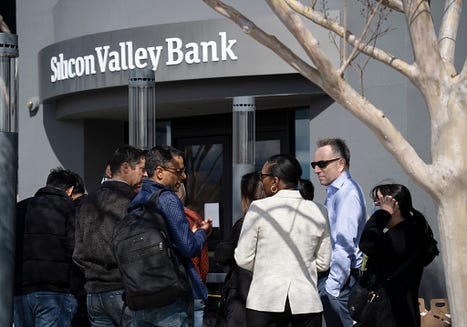Benjamin Graham's Investment Tips: A Comprehensive Guide
Benjamin Graham, often hailed as the father of value investing, has left an indelible mark on the world of finance. His investment principles, articulated in seminal works such as Security Analysis (1934) and The Intelligent Investor (1949), continue to guide investors seeking to build wealth through prudent, disciplined strategies. This article delves into Graham's core investment tips, providing a detailed exploration of his timeless wisdom.
Introduction
Benjamin Graham's legacy in the field of investment is unparalleled. His methodologies and principles have influenced generations of investors, including Warren Buffett, one of his most famous disciples. Graham's approach is centered around the concept of value investing, which involves purchasing securities that appear underpriced by some form of fundamental analysis. Let's explore Graham's key investment tips that have stood the test of time.
Invest with a Margin of Safety
The cornerstone of Graham's investment philosophy is the concept of a margin of safety. This principle involves purchasing securities at prices significantly below their intrinsic value, thereby providing a cushion against errors in analysis or unforeseen market downturns. By focusing on undervalued stocks, Graham believed investors could minimize downside risk while maximizing potential returns.
Graham's approach to the margin of safety often led him to invest in "net-nets," companies whose net current assets (current assets minus total liabilities) exceeded their market capitalization. This strategy ensured that even in a worst-case scenario, the liquidation value of the company's assets would cover the investment cost, thereby protecting the investor from significant losses.
Embrace Market Volatility
Graham's famous allegory of "Mr. Market" illustrates his view on market volatility. He personified the market as an irrational partner who offers to buy or sell shares at varying prices each day. Graham advised investors to take advantage of Mr. Market's mood swings rather than being swayed by them. This means buying undervalued stocks during market downturns and selling overvalued ones during market upswings.
To manage volatility, Graham recommended two strategies:
- Dollar-Cost Averaging: This involves investing a fixed amount of money at regular intervals, regardless of market conditions. This strategy reduces the risk of making poor investment decisions based on short-term market fluctuations.
- Balanced Portfolio: Graham advocated maintaining a balanced portfolio of stocks and bonds, typically allocating between 25% and 75% to each asset class depending on market conditions. This balance helps preserve capital during downturns while providing growth opportunities during upswings.
Understand Your Investor Profile
Graham distinguished between two types of investors: defensive (or passive) and enterprising (or active). Defensive investors prioritize capital preservation and seek steady, moderate returns with minimal effort. They typically invest in high-quality, well-established companies or index funds that track the broader market.
Enterprising investors, on the other hand, are willing to dedicate significant time and effort to research and analysis in pursuit of higher returns. They look for undervalued stocks, special situations, and other opportunities that require a deeper understanding of the market and individual companies. Graham emphasized that enterprising investors must be disciplined and thorough in their analysis to succeed.
Focus on Intrinsic Value
Central to Graham's investment philosophy is the concept of intrinsic value, the true worth of a company based on its fundamentals, such as earnings, dividends, and assets. Graham believed that the market often misprices stocks due to irrational behavior, creating opportunities for astute investors to buy undervalued securities.
To determine intrinsic value, Graham developed various methods, including the famous Graham formula:
This formula helps investors estimate the fair value of a stock based on its earnings and growth prospects. By comparing this intrinsic value to the market price, investors can identify undervalued stocks with a significant margin of safety.
Conduct Thorough Research
Graham was a strong advocate for rigorous research and analysis before making any investment decisions. He emphasized the importance of understanding a company's financial statements, competitive position, management quality, and industry dynamics. This thorough analysis helps investors make informed decisions and reduces the risk of investing in overhyped or fundamentally weak companies.
Key aspects of Graham's research methodology include:
- Financial Health: Assessing a company's balance sheet, income statement, and cash flow statement to ensure it has strong financial health and manageable debt levels.
- Earnings Stability: Evaluating the consistency and growth of a company's earnings over time.
- Dividend Record: Considering the company's history of paying dividends, which can indicate financial stability and shareholder-friendly management.
- Valuation Metrics: Using valuation ratios such as Price-to-Earnings (P/E) and Price-to-Book (P/B) to determine if a stock is attractively priced relative to its fundamentals.
Diversify Your Portfolio
Graham recognized the importance of diversification in mitigating risk. By spreading investments across different asset classes, industries, and geographies, investors can reduce the impact of any single investment's poor performance on their overall portfolio. However, Graham cautioned against over-diversification, which can dilute potential returns. He recommended a balanced approach that spreads risk intelligently while focusing on high-quality, undervalued stocks.
Avoid Speculation
Graham made a clear distinction between investment and speculation. He defined an investment as an operation that, upon thorough analysis, promises safety of principal and an adequate return. Anything that does not meet these criteria is considered speculation. Graham warned against speculative activities, such as chasing hot stocks or trying to time the market, as they often lead to significant losses.
Maintain Financial Discipline
Graham emphasized the importance of financial discipline in investing. This includes setting clear investment goals, adhering to a well-thought-out plan, and avoiding emotional decision-making. By maintaining discipline, investors can stay focused on their long-term objectives and avoid the pitfalls of short-term market fluctuations.
Adopt a Long-Term Perspective
One of Graham's most enduring pieces of advice is to adopt a long-term perspective when investing. He believed that short-term market movements are often driven by irrational behavior and do not reflect the true value of a company. By focusing on the underlying fundamentals and having patience, investors can benefit from the market's eventual recognition of a company's intrinsic value.
Be Skeptical of Popular Opinion
Graham often warned against following the herd or being influenced by popular market trends and media hype. He believed that the best investment opportunities often lie in unpopular or overlooked stocks. By maintaining an independent, contrarian mindset, investors can identify undervalued securities that others may have missed.
Conclusion
Benjamin Graham's investment principles have stood the test of time, providing a solid foundation for countless successful investors. By focusing on undervalued stocks, maintaining a margin of safety, conducting thorough research, and adopting a disciplined, long-term approach, investors can navigate the complexities of the market and achieve sustainable wealth creation. Graham's timeless wisdom continues to serve as a guiding light for those seeking to invest intelligently and prudently.












